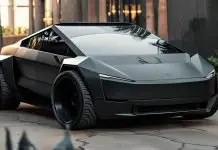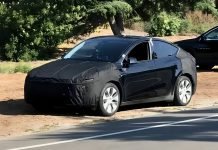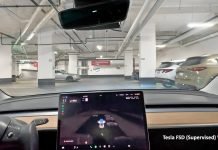The Tesla 4680 battery cells have caused quite a stir in the EV world as this new design can translate into 30% improved range with changing its chemistry. The reason for that is the optimization of the size, new design to improve performance (electrical, thermal), and making the batteries a structural element of the car. Standard batteries for electric vehicles are large, pouch-styled cells and these are cumbersome and take up a lot of space. In order to have a longer range of travel, the battery storages are stacked up which adds weight and cost, this results in complex designs that engineers have to build sensors and other components around.
Tesla’s 4680 Cells
Last year, Tesla had released a rendering of the cells inside the battery pack without the use of modules inside. There are about 960 cells, instead of several thousand like the 2170 type. The 4680 can store around 5 times more energy than the prior batteries. The anode of the 4680 battery utilizes raw metallurgical silicon which unlike industrial silicon, the structure of the material does not crack when energy is passing through. With raw silicon, Tesla is able to stabilize the surface of the material and is able to form a robust network of design through elastic ion-coating polymer coating.
A battery’s cathode terminal is required to be a stable structure to handle lithium ions from passing through, which is why most EV batteries use cobalt and nickel. Cobalt is so prominent since it is able to hold its structure during high transmissions of lithium ions. Tesla had announced that the company would be going “Cobalt-free” and would start mining Lithium in Nevada. These substantial moves were made to further reduce the EV giant’s carbon footprint.
Japanese electronics behemoth Panasonic might be a benefactor from Tesla’s 4680 battery cells according to a Bloomberg article. The latest cylindrical cells offer high potential of cost reduction and improvement of performance, although there are many technological challenges to produce them at scale. Panasonic reckons that its massive experience in battery production (almost 100 years) including the prowess to produce 2.5 billion small cylindrical cells annually “without major safety issues,” gives it an advantage over competitors.
These cells are complex to manufacture and would require extreme attention to detail. Panasonic’s EV battery head Yasuaki Takamoto said “Producing these larger cells requires you raise your craftsmanship one or two full levels or there will be safety issues, The Company’s time-tested safety-management systems “absolutely give us an upper hand here,” Apart from manufacturing another vital benefit for Panasonic is that the larger cells might be utilized also by other EV manufacturers in electronics, which would allow the company to reduce their dependency on Tesla as their main Lithium-ion consumer. Panasonic is also working on its prototype production line to run a series of tests before giving the green signal for commercial production.
Elon Musk had said that the use of this technology will reduce a lot of dead weight inside the battery, and ultimately reduce its cost by around 14% per kWh. According to calculations, this would mean the new cost to be around $127 per kWh, however, the target set by Tesla is $100 per kWh in order for electric vehicles to be able to compete with their gasoline counterparts.
As for Tesla, it is also working to develop its own in-house production of 4680 cells as a part of the company’s recent plans to vertically integrate its manufacturing process. However, things might not progress as smoothly as Tesla CEO would want: Musk himself acknowledged the challenge of mass-producing 4680 cells when speaking at a European battery conference last November. Tesla had produced the battery at a “bench-top level” and was aiming to have it at “pilot-plant level” soon, but “scaling up the production process is much harder than proving something out on a lab bench,” Musk said.” Ram Chadrasekaran, a transportation and mobility analyst at Wood Mackenzie said “There are significant technological issues to get past, issues that many in the industry have been trying to tackle for years, if achievable, these battery cells would be groundbreaking. But the jury’s still out on whether they’re deliverable.”
It’s not just Panasonic who is eyeing the 4680 format, there have been reports that the Korean tech giant LG Chem’s LG Energy solutions is experimenting with these cutting-edge cells. These cells are paving a way towards a radical shift in battery technology that if successful would make an electrified future much more desirable.


















